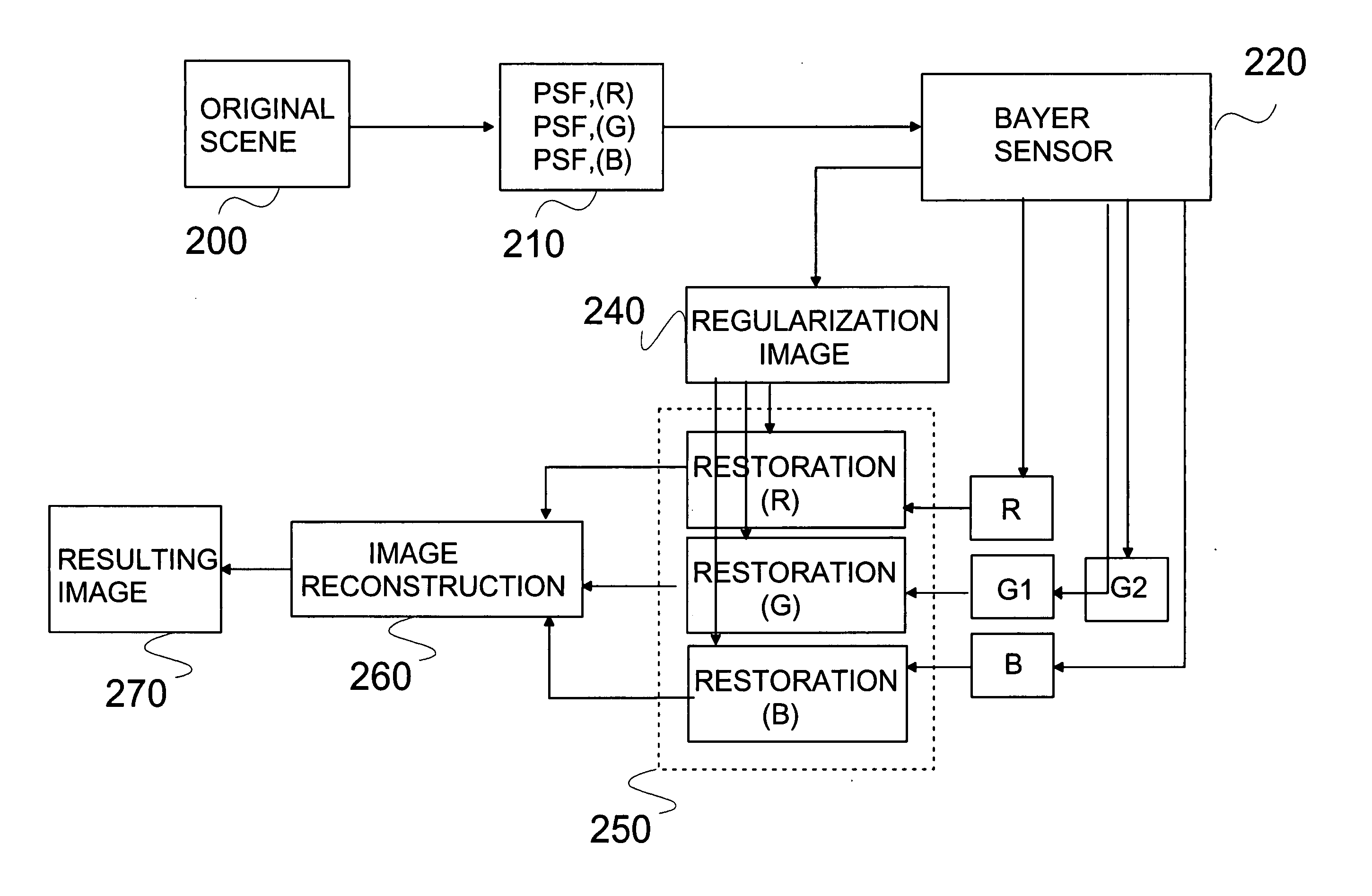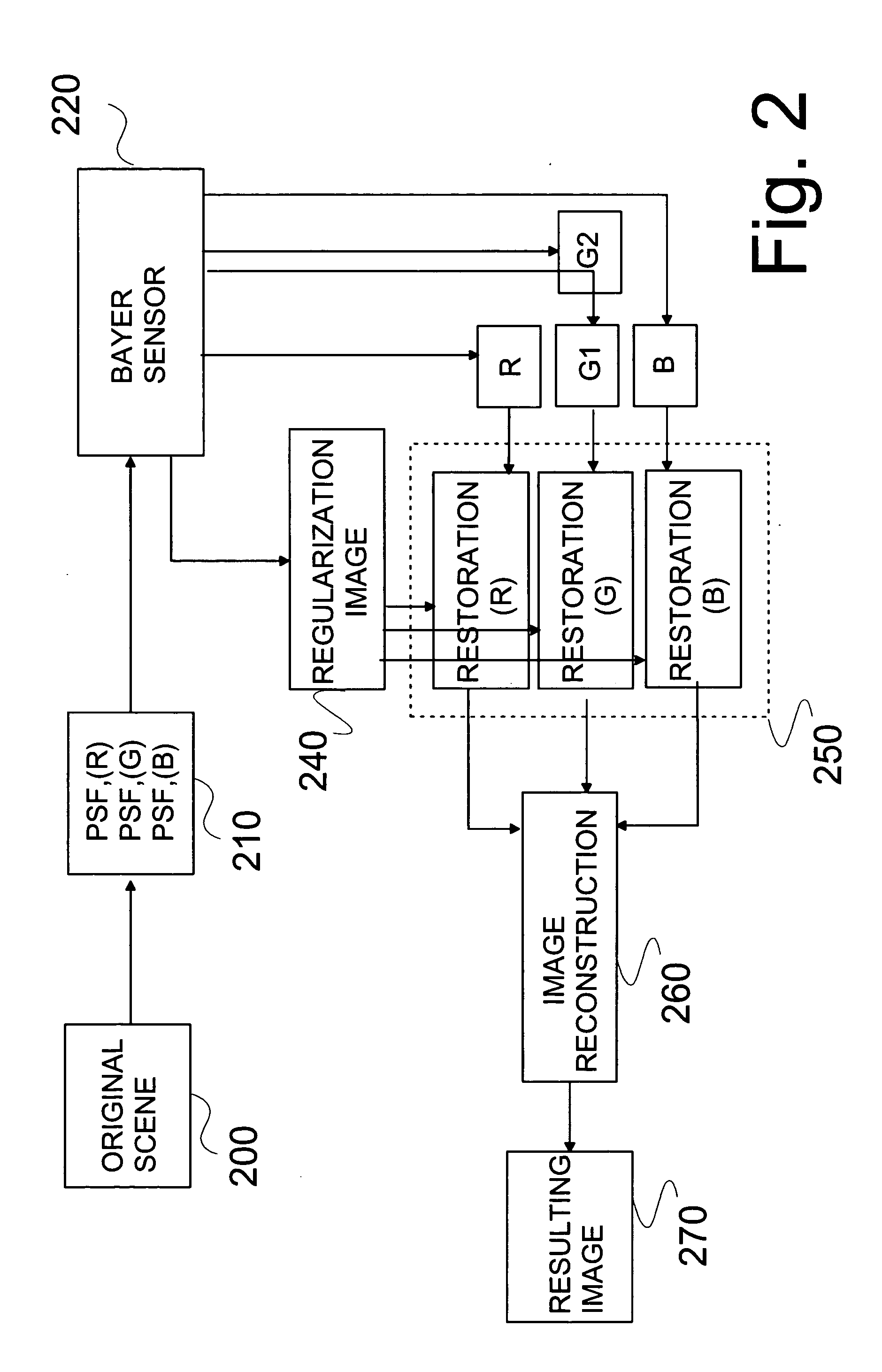Restoration of color components in an image model
a color component and image model technology, applied in the field of image processing, can solve the problems of motion blurring of the picture, blurring or degradation of the image, and high noise levels, and achieve the effects of improving the fidelity of the linear image formation model, reducing non-linearities, and increasing resolution and contras
- Summary
- Abstract
- Description
- Claims
- Application Information
AI Technical Summary
Benefits of technology
Problems solved by technology
Method used
Image
Examples
Embodiment Construction
[0027] The description of the restoration of images according to the invention can be targeted to three main points, wherein at first the blur degradation function is determined, e.g. by measuring a point-spread function (PSF) for at least one raw colour component. Secondly, a restoration algorithm is designed for at least one raw colour component. Thirdly, a regularization mechanism can be integrated to moderate the effect of high pass filtering. In the description the optics in mobile devices are used as an example, because they may generally be limited to a wide focus range. It will, however, be apparent to the man skilled in the art, that the mobile devices are not the only suitable devices. For example the invention can be utilized by digital cameras, web cameras or similar devices, as well as by high end applications. The aim of this algorithm is to undo or attenuate a degradation process (blurring) resulting from the optics. Due to the algorithm the resulting images becomes s...
PUM
 Login to View More
Login to View More Abstract
Description
Claims
Application Information
 Login to View More
Login to View More - R&D
- Intellectual Property
- Life Sciences
- Materials
- Tech Scout
- Unparalleled Data Quality
- Higher Quality Content
- 60% Fewer Hallucinations
Browse by: Latest US Patents, China's latest patents, Technical Efficacy Thesaurus, Application Domain, Technology Topic, Popular Technical Reports.
© 2025 PatSnap. All rights reserved.Legal|Privacy policy|Modern Slavery Act Transparency Statement|Sitemap|About US| Contact US: help@patsnap.com



